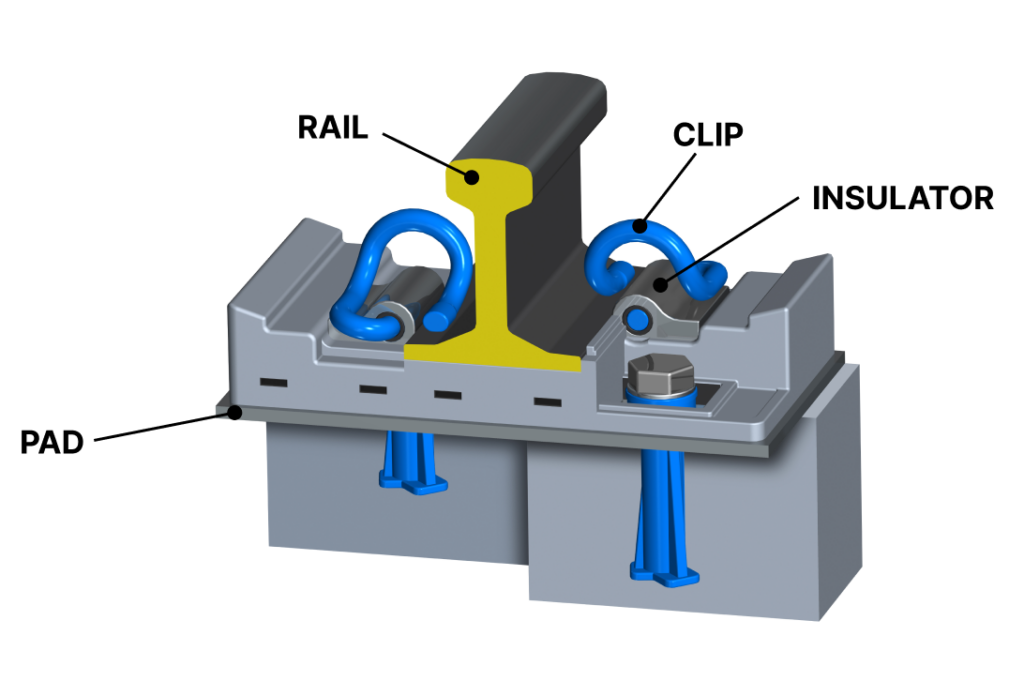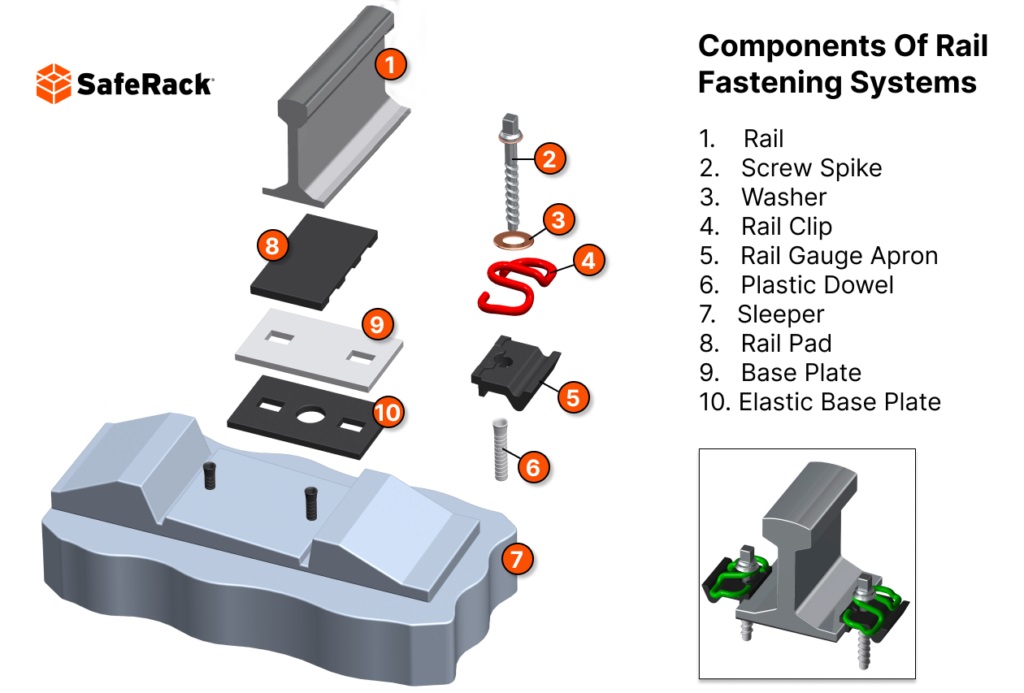Rail pads are elastic polyurethane mats positioned between rails and sleepers to protect infrastructure from vibration and wear. These components help distribute loads evenly while dampening impact forces from passing trains. Rail insulators, typically thicker than standard pads, modify rail gauges and provide electrical insulation between rails, clips, bolts, and concrete sleepers.

Overview of Rail Fastening Systems
Contemporary rail fastening systems employ multiple components working together to ensure track stability and longevity. These systems have progressed from cast iron rails with simple nail fixings in the 18th century to today’s sophisticated elastic fastening mechanisms. Each component plays a specific role in maintaining track geometry, managing forces, and protecting infrastructure.
Rail pads and insulators are critical for reducing maintenance requirements and extending track component lifespan. The elastic properties of these materials absorb energy and reduce stress concentrations. Railroad safety encompasses both infrastructure protection and worker safety, where SafeRack provides OSHA-compliant access equipment and EPA-compliant spill containment for railcar loading operations.
Learn more: Core Components of a Rail Fastening System | Railroad Construction Facts
Frequently Asked Questions
Rail pads primarily provide cushioning and vibration dampening, typically measuring 5-10mm thick. Rail insulators are thicker (10-20mm) and serve the additional function of electrical insulation, preventing current leakage in electrified rail systems and protecting signaling circuits from interference.
Rail pads typically require replacement every 15-20 years or when compression exceeds 50% of original thickness. Signs indicating replacement include visible cracking, permanent deformation, or increased track noise and vibration levels during train passage.
What is a Rail Fastening System?
Rail fastenings are devices that are used to secure running rails into baseplates or chairs or directly to sleepers, bearers, or other rail supports. They ensure that rails remain fastened to sleepers, bearers, or other rail supports and therefore play an integral role in railroad construction.
A rail fastening system then is a method of fixing rails to railroad ties or sleepers. A typical rail fastening system includes rail anchors, rail tie plates, chairs, spikes, screws, bolts, and fasteners.




